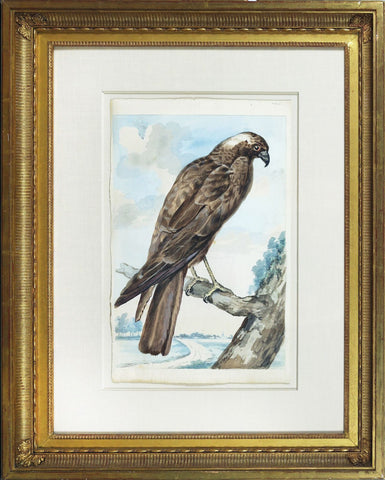
Jacob Hoefnagel (Dutch, 1575-ca. 1630), Allegory of Summer
Jacob Hoefnagel (Dutch, 1575-ca. 1630)
Allegory of Summer
Pen and black ink and gouache heightened with gold on vellum
Vellum size: 5 13/16 x 6 in.
Frame size: 15 7/8 x 16 1/4 in.
Inscribed upper center: AESTAS; and lower center: Cum Cancor remeat Phoebus, Leo fervidus
urit F. . .a colens in sidere Virginis AESTAS
Signed with initials and dated lower center: 1618/JH
1618
Provenance: Percy Carew Essex Collection, by 1930; Sotheby Mak van Waay sale (November 26,
1984), Lot 50; Private Collection, Germany.
Literature: Thomas DaCosta Kaufman, L’Ecole de Prague - La peinture a la cour de Rudolphe II
(Paris, 1985), p. 255; ibid., The School of Prague - Painting at the Court of Rudolf II [English edition
of the above] (Chicago & London, 1988), p. 214, cat. 10.8.
Jacob Hoefnagel (Dutch, 1575-ca. 1630)
The painter, Jacob Hoefnagel, came from a distinguished family of artists, all of whom benefited from the generous patronage of Rudolf II (1552-1612), the Holy Roman Emperor. Both his father, Georg, and brother, Joris, found work alongside Jacob at the Emperor’s court at Prague, an important gathering point for astronomers, humanists, physicians, artists, artisans, and antiquarians. In 1602, Jacob was named Kammermaler to Rudolf’s court, and his work aided in the illustration and identification of natural objects from the Emperor’s extensive Kunstkammer. Such experiences and the company of the learned men gathered in Prague allowed the artist to broaden the depth of his knowledge, and it is with little doubt that the present work was the product of such personal advancements.
Hoefnagel’s scene is more than a mere representation of summer. The season was particularly significant to the iconography of Rudolf II as it was the time of the year in which he was born. Maria of Spain gave birth on July 18, 1552, and this is alluded to by Hoefnagel. The putto at the center of the scene carries a crab, symbolic of the zodiac sign Cancer. The lion to the right signifies Rudolf’s birth month of July. But it also has a deeper meaning. Rudolf II surrounded himself with exotic animals and, in particular, was fond of the lion. The animal was also used in the imagery of Renaissance and Baroque leaders. Aristotle assigned the quality of courage to the beast, and in the Shepherds’ Calendars, published during the last decade of the fifteenth century, the choleric temperament was associated with the element of fire and represented by the lion. It is with little surprise that the animal soon became associated with the imagery of the warrior and, most profoundly Hercules. In the Twelve Labors of Hercules, as explained by Apollodorus and Diodorus Siculus, among others, he wrestles the Nemean Lion that terrorized the citizens of Nemea and was invulnerable to Hercules’ weapons. The god kills the lion by holding its neck in an arm lock, in a similar position to that of the putto and the lion in the above work. Thus, in the wake of the Thirty Years War and the religious turbulence of Rudolf’s reign, the lion’s symbolic meaning is highly appropriate and an essential element of Jacob Hoefnagel’s Allegory of Summer.
Please feel free to contact us with questions by phone at 215.735.8811,
or by email at loricohen@aradergalleries.
We Also Recommend





